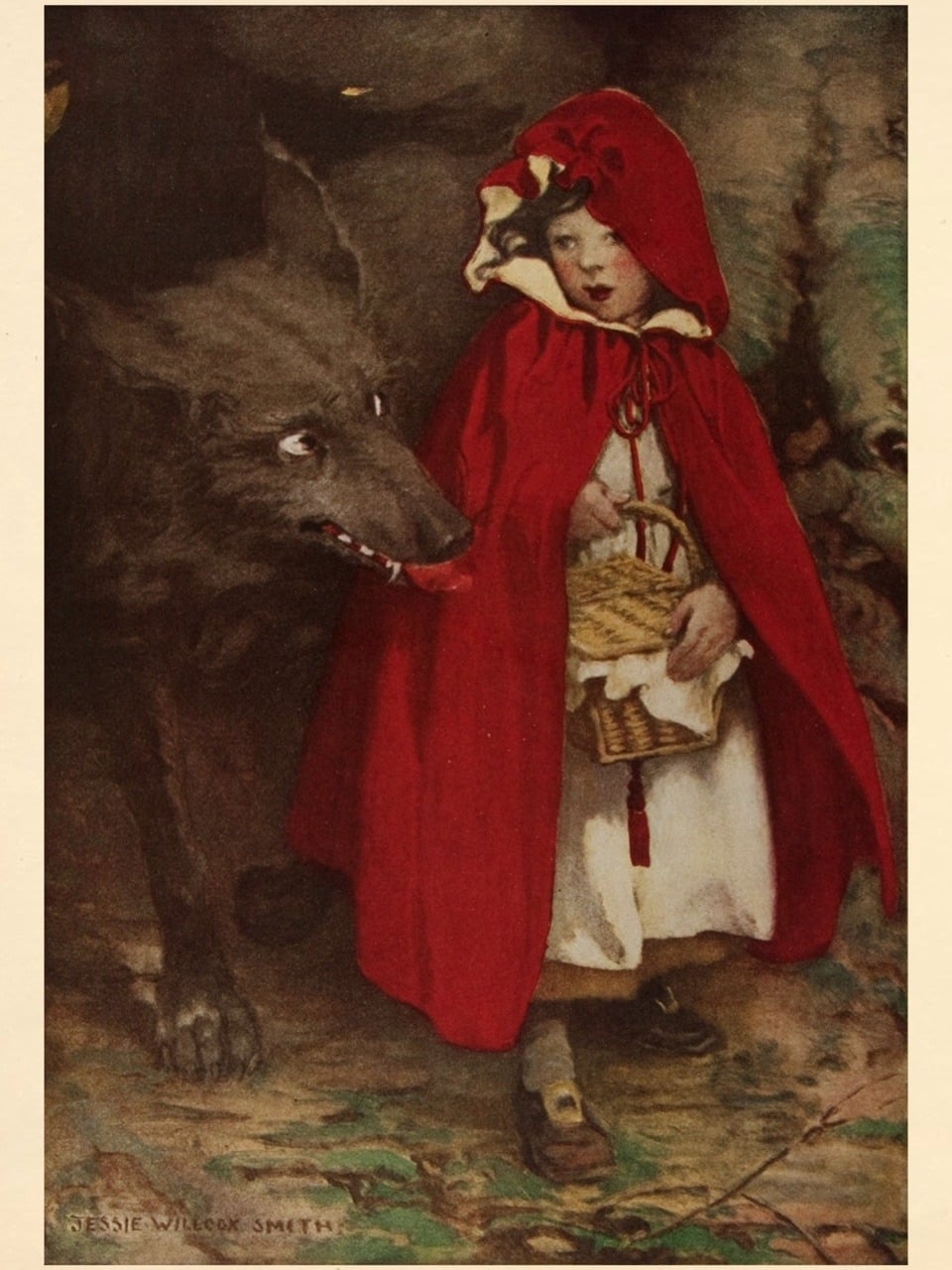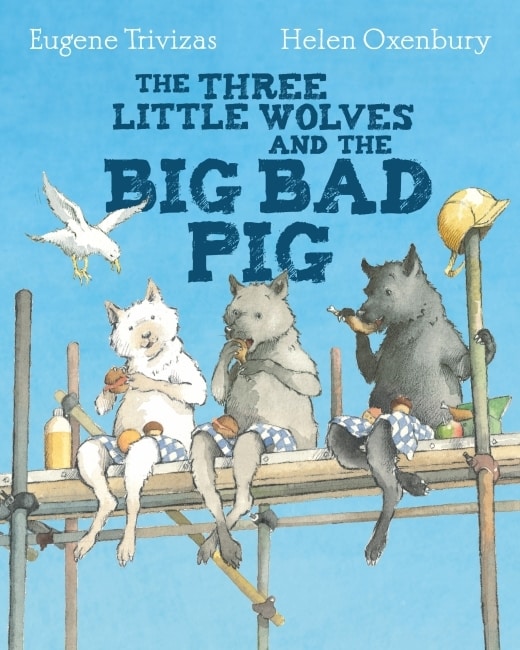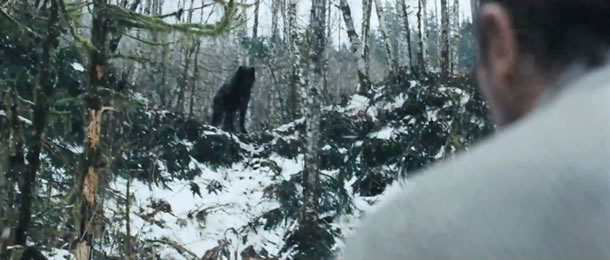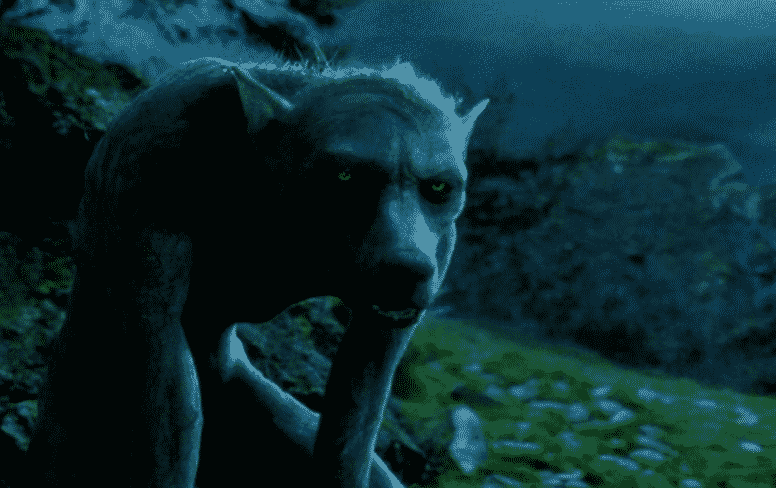uncover
History, Culture, & Media
How do history, culture, worldviews, and media influence what people think about coexisting with wolves?
Why do some people see wolves as scary and dangerous, while others see wolves as inspirational animals who are beneficial and respected?
We've already learned how a person’s view of wolves can be molded by identity and their ability to separate facts from myths. Different cultures and histories can also strongly affect what a person thinks about wolves. Books, movies, social media, and news sources influence views about this familiar predator. People are also affected by their different worldviews about human-wildlife-environment relationships.
All of these factors described on this page affect how individuals think about coexisting with wolves. Remember that identities and worldviews are complex, nuanced, and not everyone in the same group will think the same way.

What are different ways people view wolves?
Visit this Living With Wolves page and read the Four Perceptions about Wolves. What’s a one-sentence description of each of these different ways people perceive wolves?
- Wolf of Nightmares
- Spirit Wolf
- Wolf of Science
- Social Wolf
What is the relationship between Indigenous people and wolves?
Prior to European colonization, there were 250,000 or more wolves living in North America alongside hundreds of different Indigenous tribes¹. Each tribe had, and still has, unique lifestyles, cultures, and spiritual teachings that are closely tied to their relationship with the natural world.
All tribes have a common perspective about wolves and the other animals, plants, and parts of nature: “the well-being of one is linked to the well-being of all”². They believe that everything in nature is to be treated with the respect given to a family member³. All tribes have a unique expression of this relationship. Lakota culture centers around the sacred phrase Mitakuye Oyasin, which means “all my relations” or “we are all related”⁴.
Indigenous people treat the wolf with respect and caution, observing and learning from its behavior. The Pawnee tribe even took the name of the Wolf People to symbolize the courage and loyalty of this animal⁵! Viewing the natural world through a relationship lens continues to be a foundational part of Indigenous cultures today⁶.
What was the relationship between colonial settlers and wolves?
This Indigenous interconnected and relational worldview was challenged when European colonists arrived in North America. These settlers brought with them a different cultural relationship with the natural world. From the colonial settlers’ perspective, the world was organized in a hierarchy in which people’s desires and needs were prioritized over the needs of the land and wildlife. Plants, animals, and natural spaces were viewed as bountiful resources for human use.
They saw this land as a “wilderness,” and in order to progress forward and settle here successfully, they needed to tame and conquer it⁷ ⁸ ⁹.
The settlers’ worldview put them in competition with the natural world and the land’s current residents. As Europeans colonized greater swaths of North America, violently pushing Indigenous people off of their land and expanding ever further westward, this perception of needing to tame and conquer the dangerous wild persisted. In most cases, it was a losing battle for both wildlife and Indigenous people.
Before livestock animals were brought to America, settlers and wolves mostly avoided each other. However, as the settlers moved west, they killed more and more bison and deer (two of the wolf’s main food sources)¹⁰. When cattle, sheep, and other domesticated animals were introduced to the land, the fragile separation between humans and wild nature was broken. Faced with decreased options on their food menu, wolves turned to livestock to stay alive. These livestock animals were kept at the outer edges of settlements, leaving them conveniently vulnerable and exposed to predators. With their food and transportation sources threatened, settlers’ perceptions of wolves as dangerous and frightening became more exaggerated, which in turn strengthened their efforts to exterminate them¹¹. Even as colonies grew into modern cities and towns, the ideas of untamed wilderness and the cruelty of wolves have endured. By the early 1900s, wolf populations were significantly decreased through extermination by humans.
How do worldviews and moral arguments about wolves and wildlife affect coexisting?
What are different moral arguments people make for how they treat wolves, other living things, and the natural environment? A moral argument is what you consider morally “right” or “wrong.” These arguments describe your worldview, which is formed by culture and history, attitudes, values, spiritual beliefs, stories, scientific beliefs, and other influences. Your worldview is often an invisible thread woven through and expressed in your every thought and action. Many people are unaware it’s even there.
Let’s examine moral arguments that defend two conflicting worldviews about wolves.
“I believe wolves should be able to peacefully coexist with people."
Moral argument FOR coexisting
- Humans are meant to share the land and resources with other living things, including wolves.
- Nature has rights that can be superior to human rights.
- Wolves deserve to live where they once thrived.
- Wolves are an essential part of their ecosystem.
“I believe wolves should NOT be able to peacefully coexist with people.”
Moral argument AGAINST coexisting
- The environment and other living things are resources to be used by people.
- Human rights are superior to rights of nature.
- Wolves can be removed from land based on people’s needs and desires.
- Ecosystems can be balanced without wolves.
Another Worldview: Nature has Legal Rights
The Rights of Nature worldview links moral and legal arguments that wildlife, including wolves, and the environment have rights just as people have rights. Here’s what it says:
“Rights of Nature is the recognition and honoring that Nature has rights. It is the recognition that our ecosystems – including trees, oceans, animals, mountains – have rights just as human beings have rights. Rights of Nature is about balancing what is good for human beings against what is good for other species, what is good for the planet as a world. It is the holistic recognition that all life, all ecosystems on our planet are deeply intertwined.
“Rather than treating nature as property under the law, rights of nature acknowledges that nature in all its life forms has the right to exist, persist, maintain and regenerate its vital cycles.
“And we – the people – have the legal authority and responsibility to enforce these rights on behalf of ecosystems. The ecosystem itself can be named as the injured party, with its own legal standing rights, in cases alleging rights violations.”
-Excerpt from The Rights of Nature website.

Literature about wolves
How have written stories influenced how people view wolves?
The wolf has been a popular polarizing character in literature for generations. Wolves in folktales like Little Red Riding Hood, Peter and the Wolf, and The Boy Who Cried Wolf are portrayed as cruel and cunning. Phrases like “a wolf in sheep’s clothing,” “throw them to the wolves,” and “cry wolf” all paint a picture of wolves as malicious creatures. These stories and inaccurate characterizations, repeated over generations, have created misperceptions in an entire culture.
In a creative attempt to push back against the evil image of the wolf, the children’s book The Three Little Wolves and the Big Bad Pig depicts the wolves as timid and frightened of a fierce pig. Unfortunately, these characters are also inaccurate, and only add to misperceptions. In reality, wolves are not vicious hunters and killers of people; they are not animals frightened of their environment; and they are not tame cuddly pets.
Screen stories about wolves
How have movies, TV, and other screen stories influenced how people view wolves?
The wolf has long been one of our society’s favorite villains, the animal of nightmares! Wolves are familiar characters in movies and TV. Think of Frozen, The Grey, Benji the Hunted, Sword and the Stone (animated), Alpha, and horror movies such as Wolves. Each inaccurately portrays this animal as the villain bent on harming or killing the heroes of the story.
The common human-turned-wolf or werewolf characters also terrify people and fuel the flames of misperceptions. The werewolf character list seems endless-- Harry Potter, Supernatural, Vampire Diaries, Beauty and the Beast, Grimm, Buffy the Vampire Slayer, Dark Shadows, Twilight.
This repetitive characterization of wolves as evil and dangerous has created a false image that’s contrary to the reality of the real wolf’s life and livelihood. There are far fewer movies that portray a truthful image of wolves. Think Dances with Wolves. These stories don’t create the fear-based adrenaline rush that you feel with the fictional wolf and werewolf characters. Undoing the wolf’s portrayal as the villain is a challenging task, but a necessary one if coexistence is the goal.

